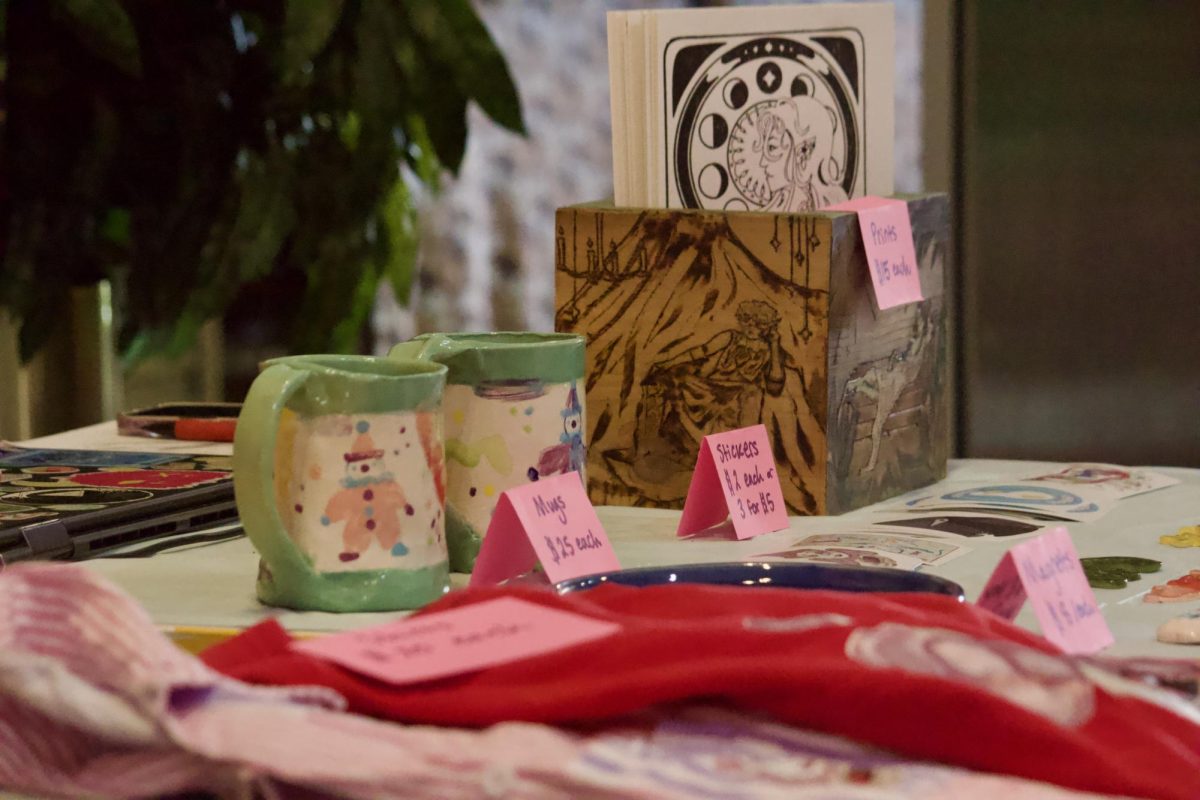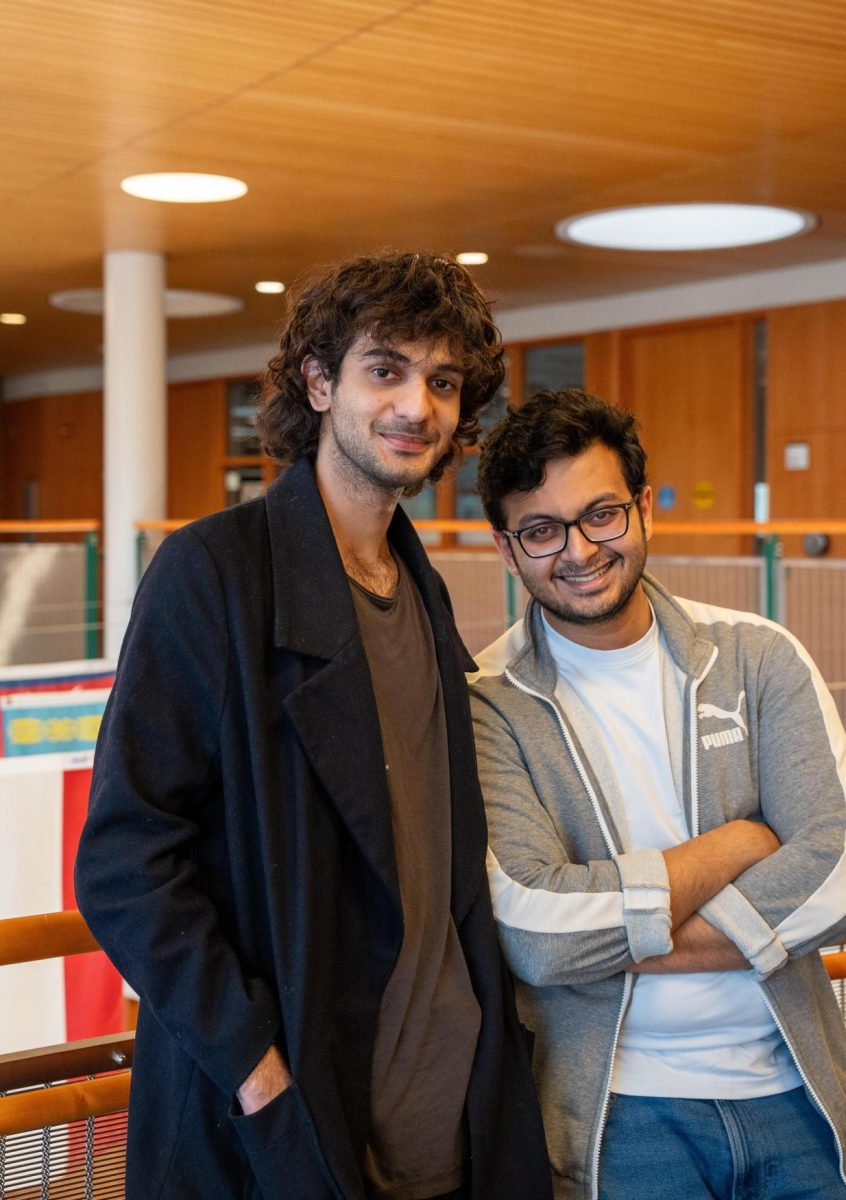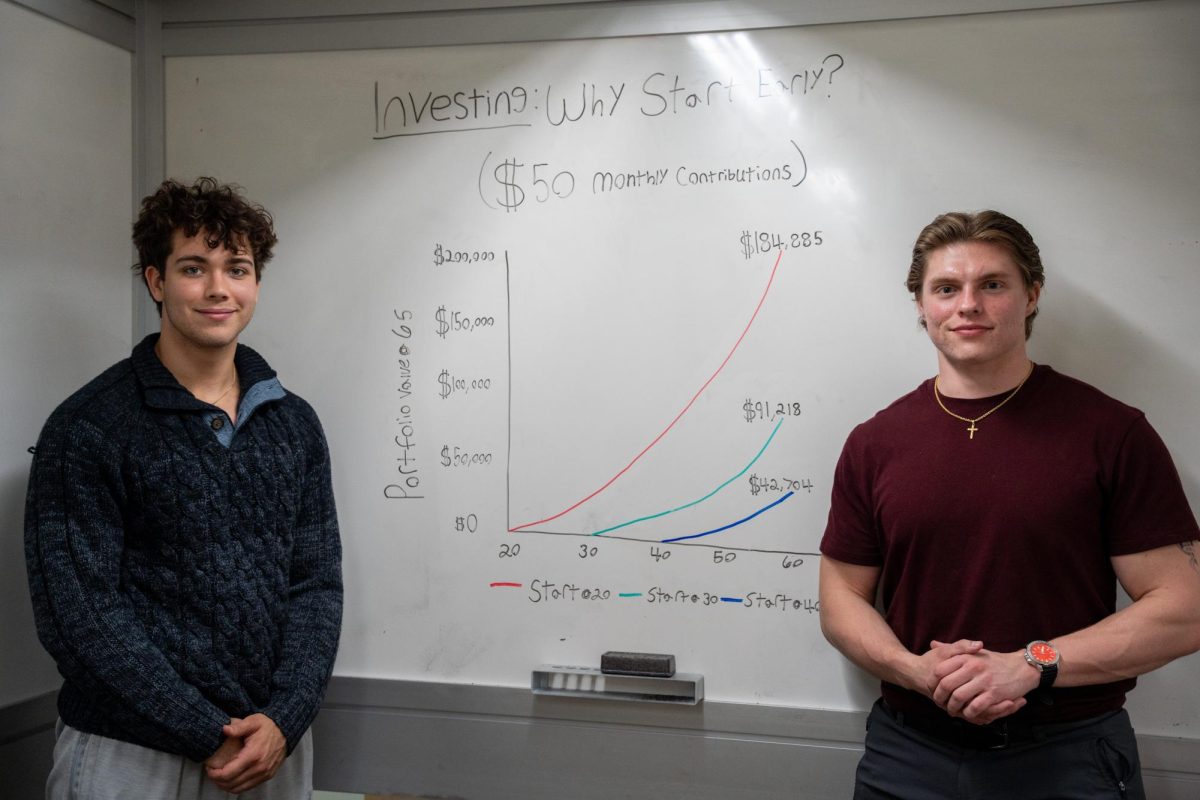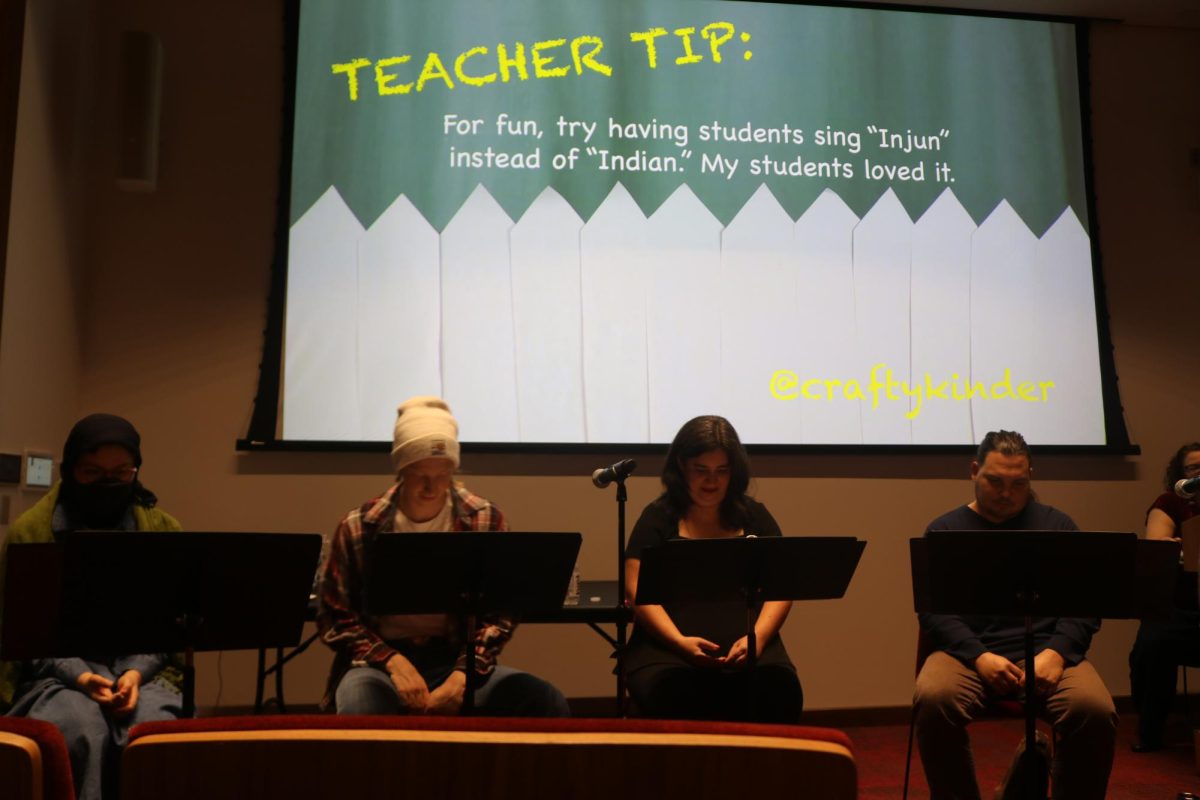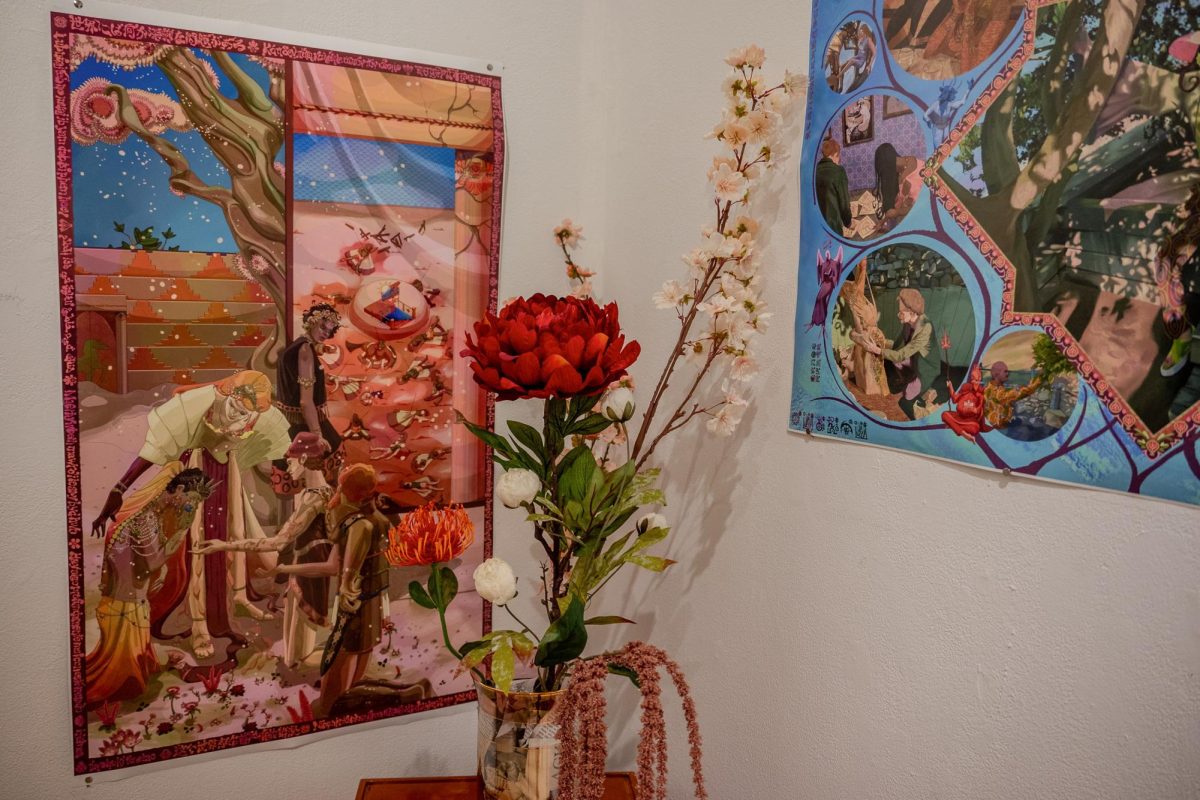In its October 16th reading of “The Thanksgiving Play” by Larissa Fasthorse, the Theatre, Dance, and Performance Studies (TDPS) Department brought a complex work centered on whitewashing of Thanksgiving and Indigenous art to the Grinnell College campus.
“The Thanksgiving Play,” a satirical comedy about four white artists attempting to create a culturally sensitive First Thanksgiving play for children, is the latest in a series of semi-staged readings put on this fall. With only one rehearsal preceding its performance, the reading allowed more faculty, staff and students to participate at different levels of involvement.
The play centered on the collaborative, “devised theater” process of creating a Thanksgiving play. The project is led by a drama teacher Logan, played by Hemlock Stanier `25, who is desperate to save her job, alongside her yoga instructor boyfriend Jaxton, played by Jackson Scheer `28. They are aided by a history teacher trying to maintain historical accuracy, Caden, played by Professor John Petrus, chair of the Spanish department, and professional actress Alicia, played by Kate Ferraro, interim assistant dean of academic success, hired to provide an Indigenous “cultural compass” but revealed to not actually be Indigenous. In attempts to be “enlightened white allies” and represent the Indigenous perspective while also creating a “relatively happy” story for children, the characters grappled with their lack of understanding and performative identity.
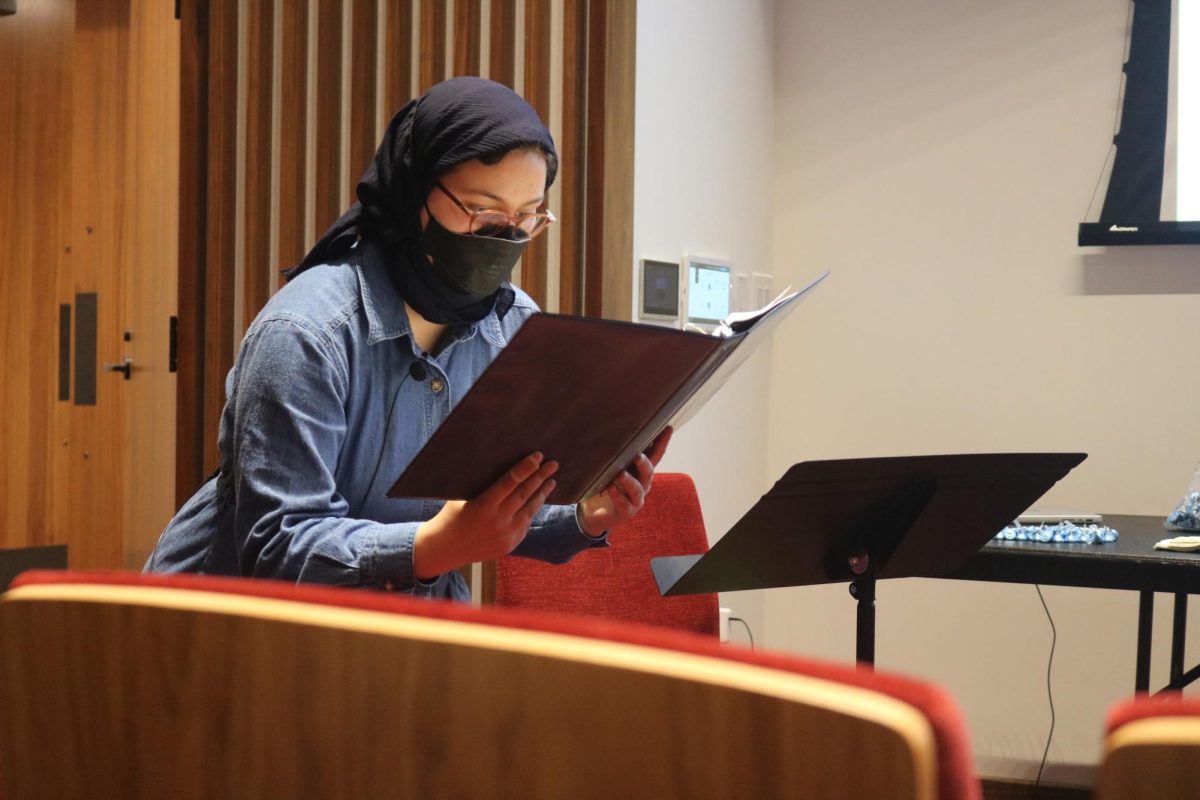
The smaller amount of work needed to be a part of this production opened the door for different cast members to participate. Ferraro said, “It was really easier to say yes to because of just the lighter time commitment and that the stakes weren’t super high … especially for folks like me who haven’t done it in 15 years, or students who haven’t gotten a chance to be in a production yet.”
Lillia Morrish `25 read stage directions alongside the four actors and served as the dramaturg for the work. This role is tasked with providing historical and cultural context to the actors and audience, especially important to a reading of this piece. “During our single rehearsal, we watched a few different comedy clips and skits that were from Indigenous comedians and Indigenous comedy troupes specifically to try to contextualize … that style of Indigenous, dark comedy,” said Morrish.
The performance was preceded by a quote from 1491, the comedy group behind television show “Reservation Dogs,” urging the audience that “It’s okay to laugh.” Assistant Professor Jen Shook, TDPS, the director of the reading, said,“It is so in your face with the way it talks about genocide. And also it’s really funny, and those two things are hard to reconcile, so you need a little bit of time to sit with it.”
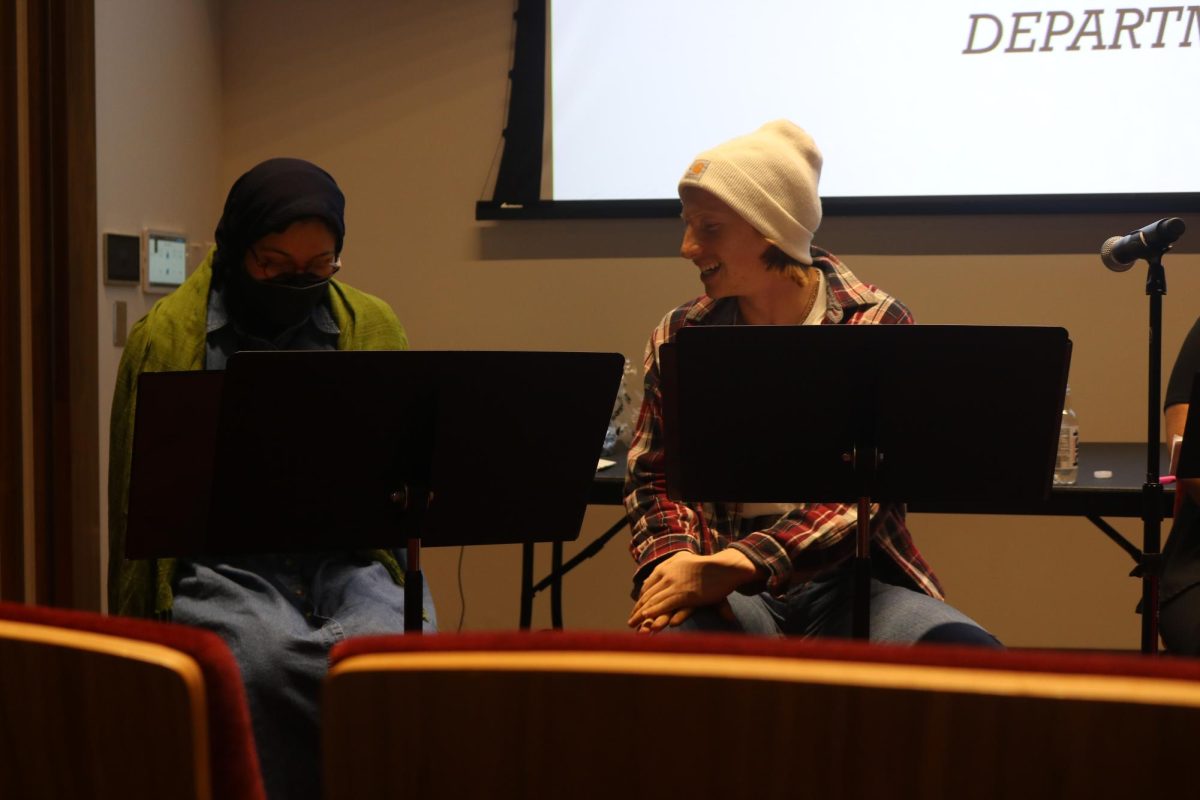
Actors used intentional gestures and body language to explore the self-centered nature of the characters, who seek to perform diversity and inclusion for personal gain.
Shook said, “Even if it’s not staged, even if you’re just sitting, how do you physically express a character? It’s a tremendous acting exercise in, what do you express with the least amount of tools to express it, but just your body?”
Presenting the play as a reading instead of a fully staged production came with unique challenges and benefits. Morrish said, “There are obvious disadvantages [to staged readings] in terms of not being practiced enough as you would in a staged play … but I think honestly the really significant advantage, and why I’m so glad we’re doing this series, is that it allows us to bring a lot of scripts to life that we otherwise wouldn’t.”
“The Thanksgiving Play,” the first Broadway play written by an Indigenous playwright, was Fasthorse’s response to theaters praising her work but stating that it was hard to cast a play with Indigenous characters. Bringing the play to Grinnell highlighted “the very sobering reality of how little Indigenous art we engage with, both just as Americans but even on campus, where I do think we’re a lot more thoughtful,” said Ferraro. This production invited the Grinnell community to confront its own engagement with Indigenous voices and narratives, encouraging reflection through humor and satire.








